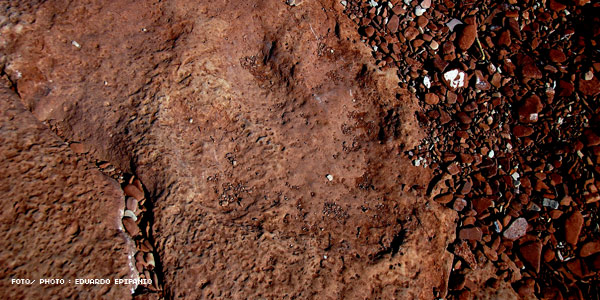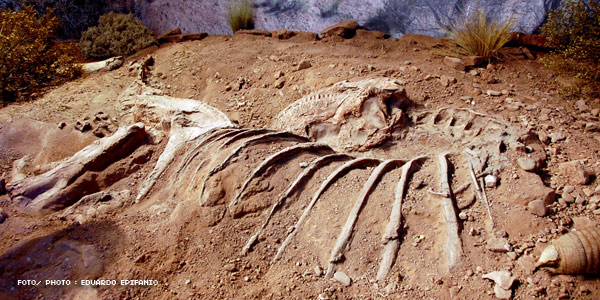PALEONTOLOGY IN ARGENTINA
FOSSILS

The fossils are testimonies from the past. They evidence the existence of organisms in other geological eras and they are present at different levels in the earth layers. The fossilization process, which takes place along millions of years, consists basicaly in the replacement of the remains of an organism components by minerals. This way, the fossils have the same shape as the original organism or bone but they are no longer made of the same material. They are heavier and their color and texture vary widely. Most fossils are very similar to rocks, but others may be more exotic, such as opals or amber.
Sometimes, fossils are not remains but evidence of the activity of live beings, such as burrows, footprints, track ways or perforations.
Some fossil findings have taken place by chance. But, as most fossils are generally buried, it may be tough to decide the exact point for an excavation.
A large number of fossils have been found in Argentina. This land, which is among one of the greatest paleontological centers in the world, seems to be a real Cretaceous park, not only of land animals, but also of sea species, which are estimated to have dominated the waters of the area some 80 million years ago.
According to Carolini, discoverer of the Gigantosaurius Carolinii in 1993, millions of years ago a tongue of the ocean penetrated the central part of Río Negro, thus producing the arrival of sea dinosaurs to this area, which became an extraordinary cemetery of species. All this was favored by the warm and humid weather of those times.
Nevertheless, this great paleontological treasure was unknown until a couple of decades ago as the country did not have enough human resources for exploration.
Today, National Law Nº 9080 sets forth that fossils are part of our richness and have been declared Natural World Heritage.

© 2003-2025 Total or partial reproduction forbidden. Derechos de Autor 675246 Ley 11723
Who we are | Contact us | Press and Publicity | Terms and Conditions



